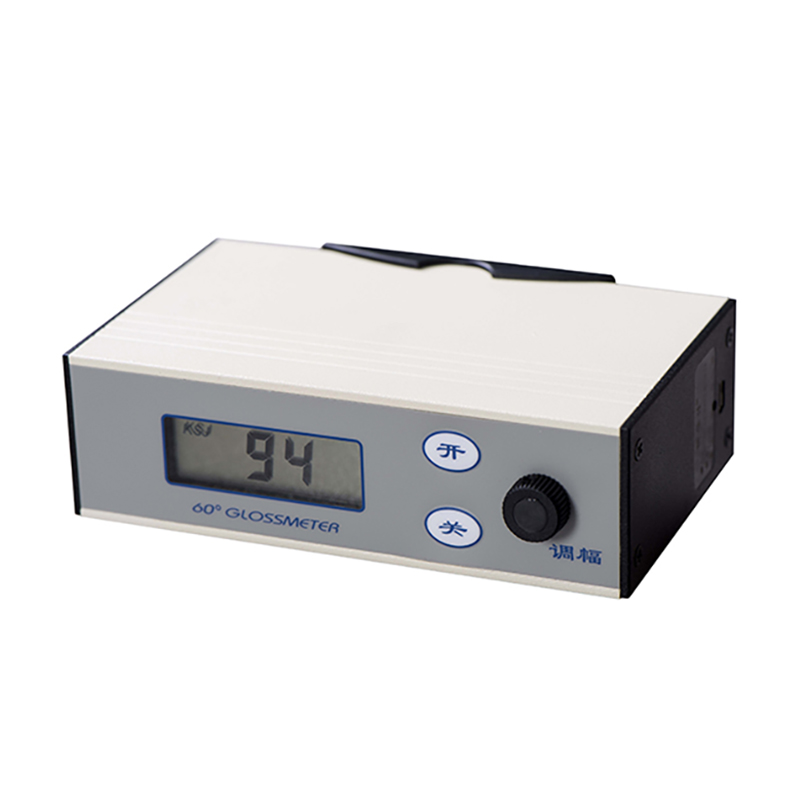头部邮箱+阿里巴巴
E-mail: sales@ksj.cn 

Enter search content

NEWS
News
Hot Products
Tri Gloss Meters: A Must-Have Tool for Optoelectronics Manufacturers
- Time of issue:2023-09-21
(Summary description)1. Introduction: Understanding the Significance of Tri Gloss Meters in Optoelectronics Manufacturing
Optoelectronics manufacturers are constantly striving to enhance their production processes and deliver superior products to meet the growing demands of the industry. In this pursuit, Tri Gloss Meters have emerged as an indispensable tool that plays a crucial role in ensuring the quality and performance of optoelectronic devices.
Tri Gloss Meters: A Must-Have Tool for Optoelectronics Manufacturers
(Summary description)1. Introduction: Understanding the Significance of Tri Gloss Meters in Optoelectronics Manufacturing
Optoelectronics manufacturers are constantly striving to enhance their production processes and deliver superior products to meet the growing demands of the industry. In this pursuit, Tri Gloss Meters have emerged as an indispensable tool that plays a crucial role in ensuring the quality and performance of optoelectronic devices.
- Categories:Industry news
- Author:
- Origin:
- Time of issue:2023-09-21 11:15
- Views:0
1. Introduction: Understanding the Significance of Tri Gloss Meters in Optoelectronics Manufacturing
Optoelectronics manufacturers are constantly striving to enhance their production processes and deliver superior products to meet the growing demands of the industry. In this pursuit, Tri Gloss Meters have emerged as an indispensable tool that plays a crucial role in ensuring the quality and performance of optoelectronic devices.
2. How Tri Gloss Meters Work: A Detailed Overview
Tri Gloss Meters are precision instruments designed to measure the gloss, haze, and distinctness of image (DOI) of various surfaces. The gloss measurement determines the level of light reflectance on a surface, while haze measurement quantifies the amount of scattered light. DOI, on the other hand, assesses the clarity and crispness of reflected images.
These meters operate based on the principle of specular reflection, which involves directing a beam of light onto the surface and measuring the amount of light reflected. By analyzing the reflected light, Tri Gloss Meters provide accurate and objective measurements, helping manufacturers monitor and control the quality of their products.
3. Key Applications of Tri Gloss Meters in Optoelectronics Manufacturing
Tri Gloss Meters find extensive application across various stages of the optoelectronics manufacturing process. Some of the key applications include:
3.1 Quality Control: With their ability to accurately measure gloss, haze, and DOI, Tri Gloss Meters enable manufacturers to assess the quality of their products. By setting specific gloss and haze standards, manufacturers can ensure consistency in their output, minimize defects, and deliver high-quality products.
3.2 Surface Characterization: Optoelectronic devices often require specific surface characteristics to perform optimally. Tri Gloss Meters help manufacturers evaluate and control the surface properties, such as glossiness and smoothness, ensuring the products meet the desired specifications.
3.3 R&D and Product Development: Tri Gloss Meters play a pivotal role in research and development activities, assisting manufacturers in evaluating the impact of different materials and coatings on gloss, haze, and DOI. These measurements aid in the development of new products and the improvement of existing ones.
4. Benefits of Using Tri Gloss Meters in the Manufacturing Process
The integration of Tri Gloss Meters into the optoelectronics manufacturing process offers several benefits:
4.1 Enhanced Quality Control: Tri Gloss Meters enable manufacturers to maintain consistent product quality, ensuring that each unit meets the desired standards. By identifying variations in gloss, haze, and DOI, manufacturers can take corrective actions promptly, leading to superior products.
4.2 Increased Customer Satisfaction: Optoelectronic devices with impeccable gloss, minimal haze, and high DOI provide users with an enhanced visual experience. Tri Gloss Meters help manufacturers achieve these attributes, resulting in greater customer satisfaction and brand loyalty.
4.3 Improved Efficiency: By eliminating the need for subjective visual inspection, Tri Gloss Meters streamline the quality control process, saving time and reducing human errors. The ability to obtain precise measurements quickly enhances overall manufacturing efficiency.
4.4 Cost Reduction: Accurate measurements obtained through Tri Gloss Meters minimize rework, rejects, and customer complaints. This results in cost savings for the manufacturer, as resources are optimized and waste is minimized.
5. Factors to Consider When Choosing the Right Tri Gloss Meter
Selecting the appropriate Tri Gloss Meter for optoelectronics manufacturing requires careful consideration of several factors:
5.1 Measurement Range: Ensure that the meter's measurement range aligns with the gloss, haze, and DOI requirements of your specific products. Having a wider measurement range allows for greater flexibility and accommodates a variety of surfaces.
5.2 Accuracy and Repeatability: Look for Tri Gloss Meters with high accuracy and repeatability to ensure precise and consistent measurements. This is crucial for maintaining quality control standards and meeting customer expectations.
5.3 Portability and Ease of Use: Consider the portability and user-friendliness of the instrument. Opt for a Tri Gloss Meter that is lightweight, handheld, and equipped with a user-friendly interface for convenient operation across different manufacturing stages.
5.4 Data Management Capabilities: Manufacturers often require comprehensive data analysis and reporting. Look for Tri Gloss Meters that offer advanced data management features, such as data logging, statistical analysis, and report generation, to facilitate effective decision-making.
6. FAQs: Clearing Common Doubts about Tri Gloss Meters
Q1: Can Tri Gloss Meters measure gloss on different types of surfaces?
A1: Yes, Tri Gloss Meters can measure gloss on various surfaces, including metals, plastics, coatings, and more.
Q2: Do Tri Gloss Meters require calibration?
A2: Yes, regular calibration is essential to ensure accurate measurements. Calibration ensures that the instrument provides reliable and consistent results.
Q3: Can Tri Gloss Meters measure gloss at different angles?
A3: Yes, Tri Gloss Meters are available in different models that can measure gloss at various angles, allowing for comprehensive surface assessment.
Q4: Are Tri Gloss Meters suitable for outdoor use?
A4: Some Tri Gloss Meters are designed for outdoor applications and are equipped with features like built-in light sources to adapt to different environments.
Q5: Can Tri Gloss Meters measure the gloss of transparent materials?
A5: Yes, Tri Gloss Meters can measure the gloss of transparent materials, providing valuable insights into their quality and performance.
7. Conclusion: Harnessing the Power of Tri Gloss Meters in Optoelectronics Manufacturing
Tri Gloss Meters have become an indispensable tool for optoelectronics manufacturers, offering an effective and efficient way to measure gloss, haze, and DOI. By utilizing these powerful instruments, manufacturers can ensure consistent quality, enhance customer satisfaction, and optimize their manufacturing processes. Incorporating Tri Gloss Meters into the optoelectronics manufacturing workflow is a must for those aiming to excel in the industry and deliver superior products to their customers.
Scan the QR code to read on your phone

After eighteen-years’development, KSJ Glossmeters have been widely used all over the world in gloss measuring of paintwork, decorative materials, woodenwares, ceramic, printing ink, paper, as well as metal polishing and depositing. And becoming the first choice for experts in the above fields.
Online Message
Contact Us



















